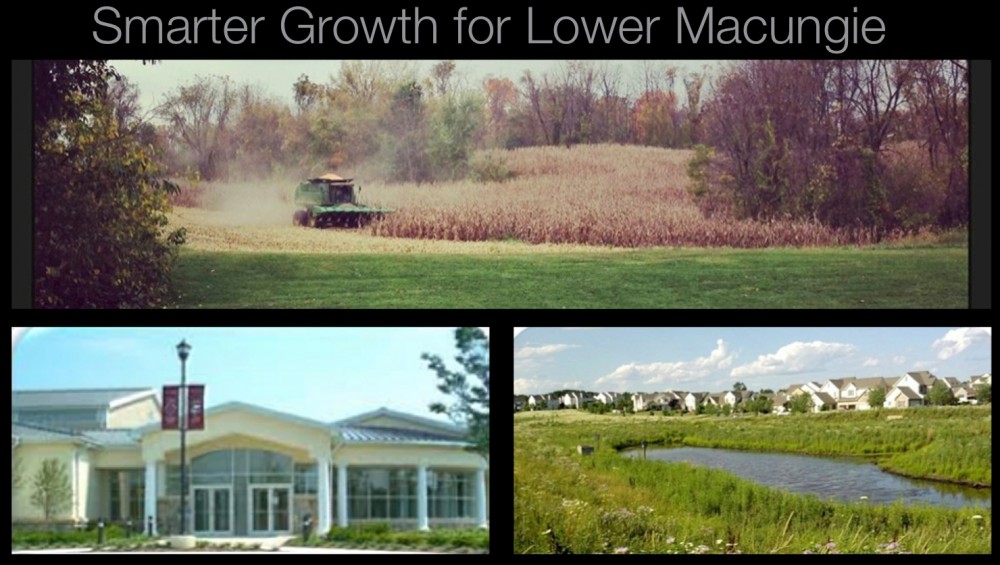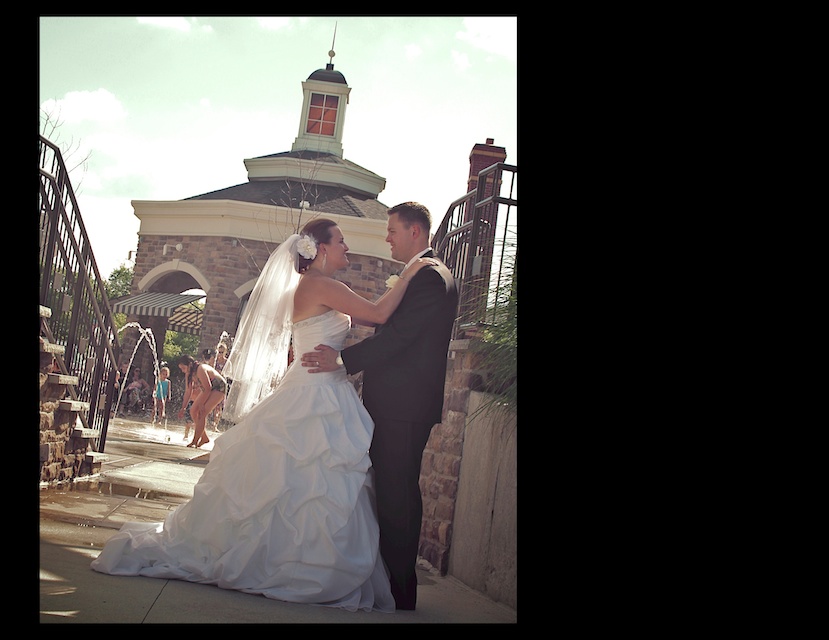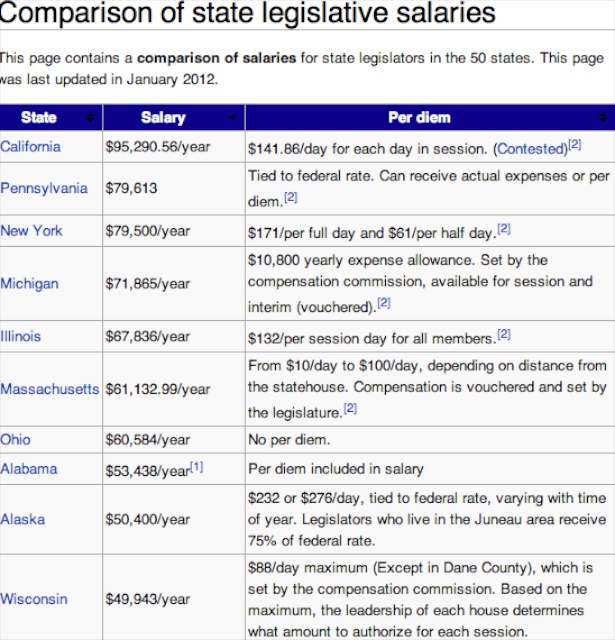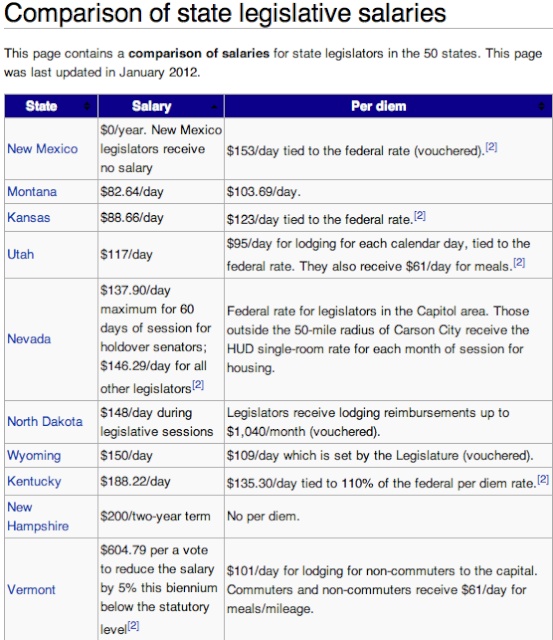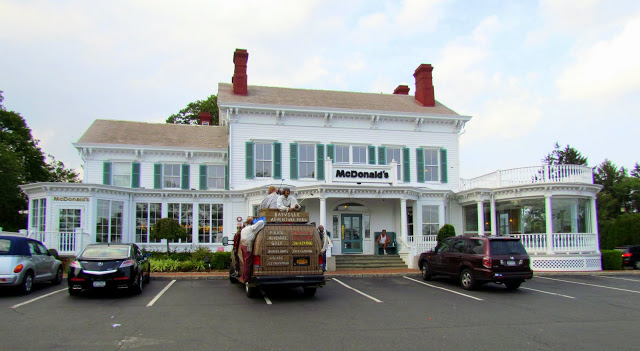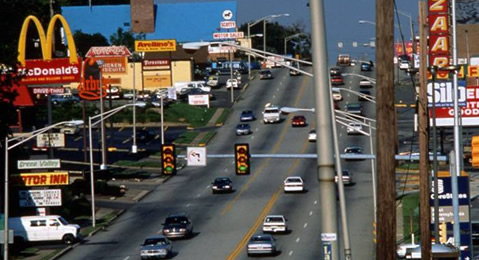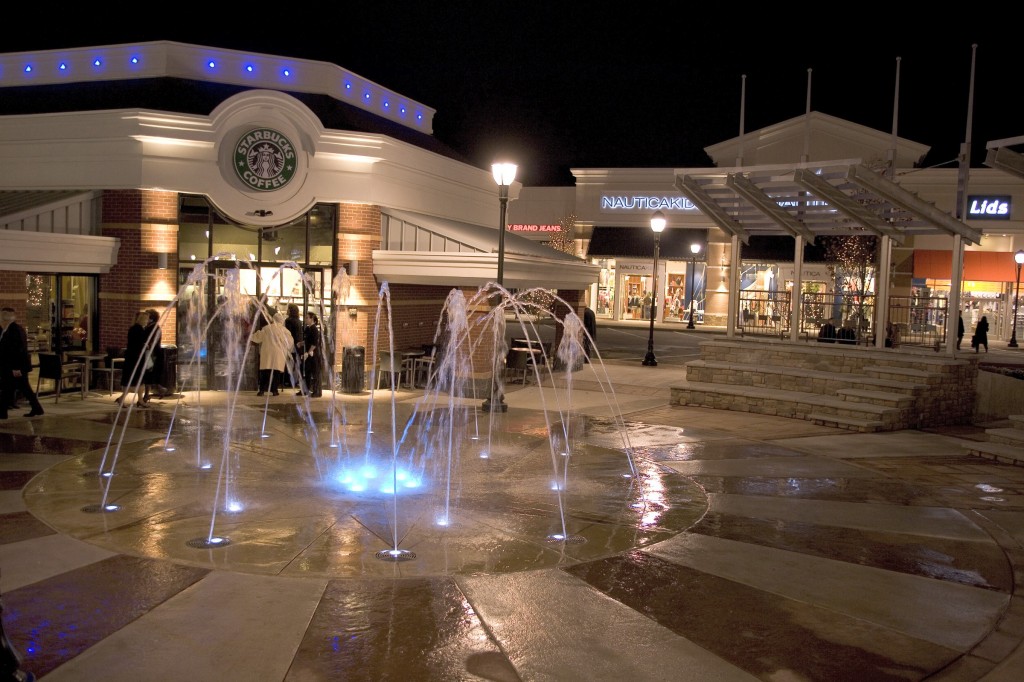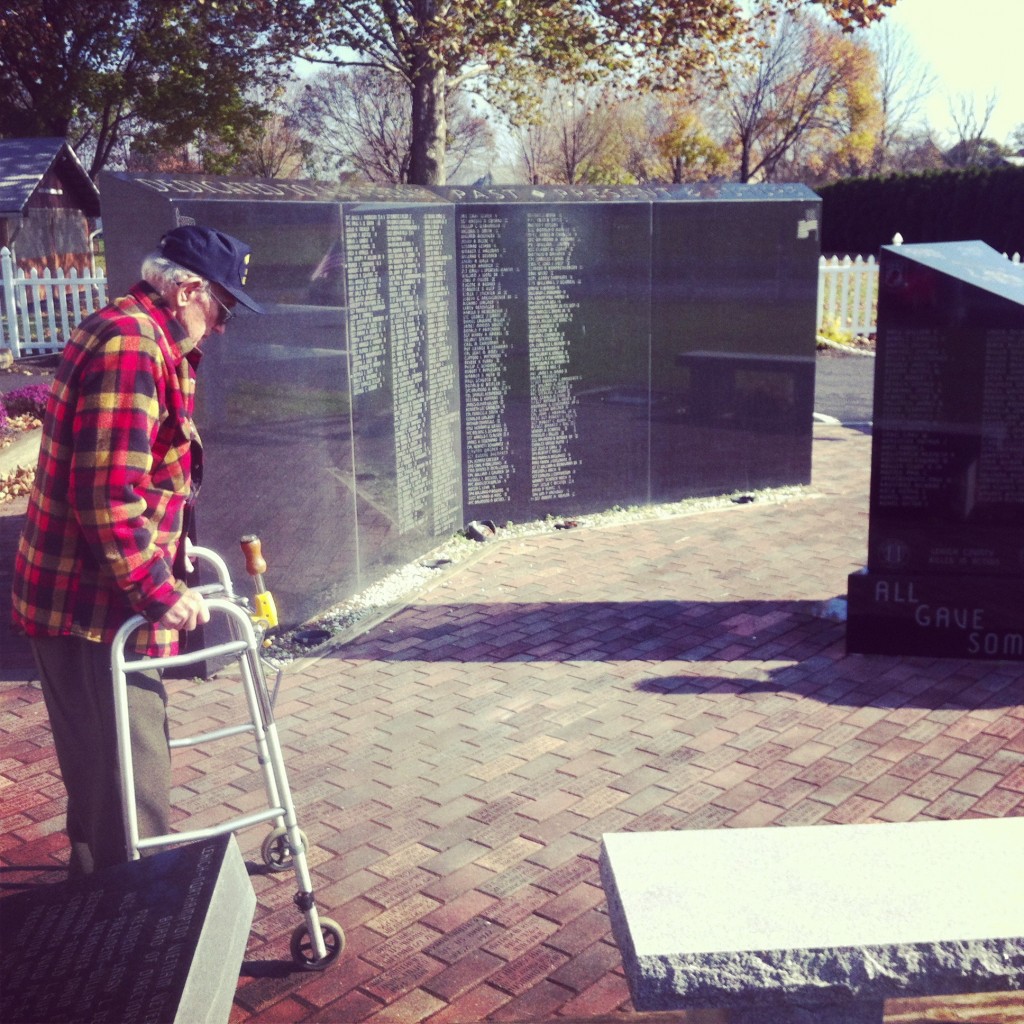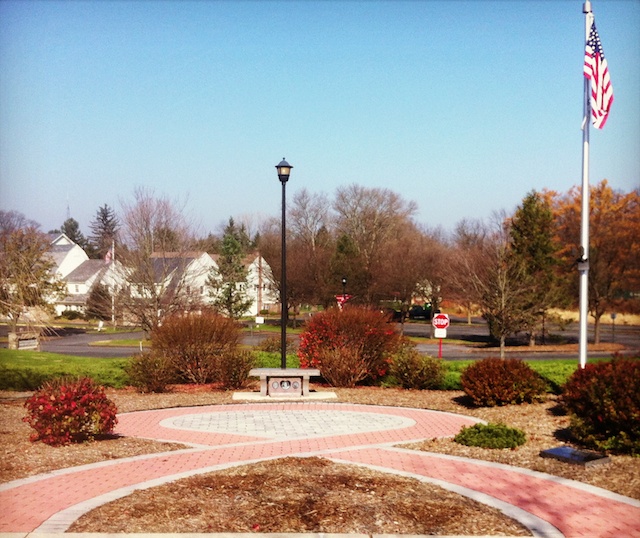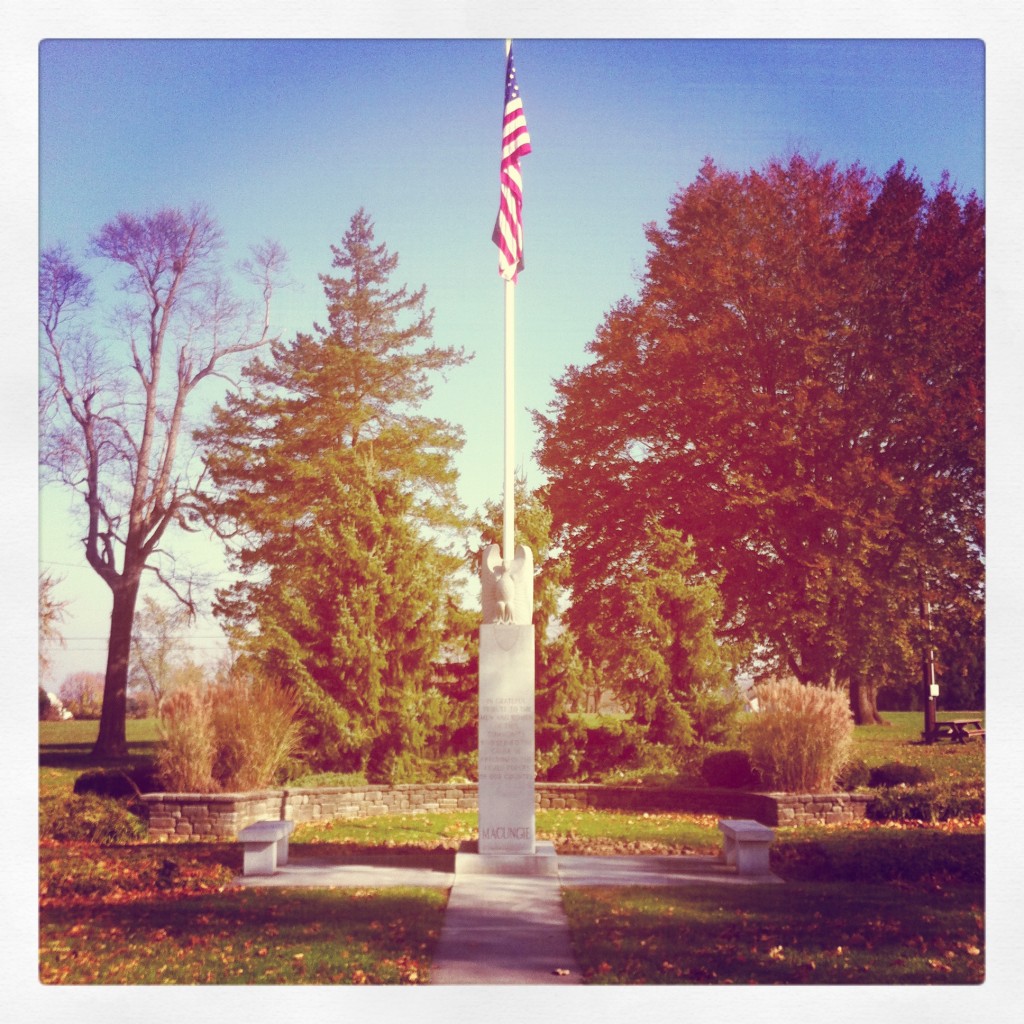‘Friends LMT’ is not anti growth. We recently got some press in a couple outlets for our support of the Hamilton Crossings Development.
Even Friends for the Protection of Lower Macungie, which has been critical of some of the township’s planned development, has voiced its support for the project. Mcall
We don’t arbitrarily decide what we support and don’t. We take potential projects and apply the 10 principles of smart growth. Here is an example of 5 of the ten smart growth principles contrasting the Jaindl Development with the Hamilton Crossings Development.
(Note we look at this plan purely from a land use standpoint, we don’t take a stance on the funding mechanisms specifically the grants or TIF’s)
1. Strengthen and direct development towards existing communities: Perhaps the most important criteria for our support of Hamilton Crossings. (HC) The project is being built in the designated commercial corridor of the township. This both according to county and local planning. The lions share of the infrastructure is already in place with the bypass. It’s now all about prioritizing by seeking a return on investment to maximize taxpayer dollars. HC accomplishes this big time.
Contrast this with Jaindl. Costly new infrastructure must be built to accommodate this development on the fringe of the twp. The Jaindl development is an example of the suburban sprawl ponzi scheme.
‘No large up-front bet’
“The smart growth approach requires no oversizing, no large up-front bet with public money, no stifling congestion if the system doesn’t respond as predicted, no more building multimillion-dollar industrial parks to gamble on attracting jobs.
And remember first and foremost a fundamental principle that outlying greenfield development is NEVER smart growth. Which leads us to….
2. Preserve open space, farmland, natural beauty, and critical environmental areas: It’s not just quality of life. Although that is a huge part. It’s a building in a sustainable way thing. And yes, that means both environmentally but equally important fiscally. Smart Growth dictates that you build according to a transect.
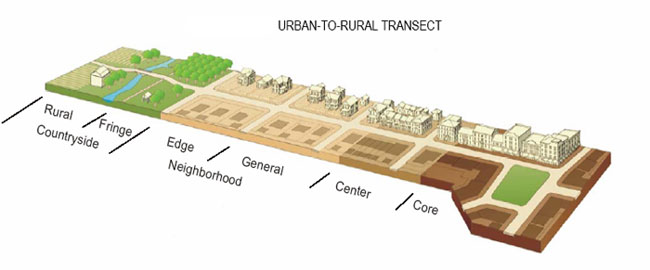
Smart Growth Transect – From the Urban Core to rural
What leadership did in the 80’s was correctly re-zone the area’s west of Rt. 100 to agriculture protected. This remained for 20 years without challenge (until Jaindl saw his opportunity with the current BOC) The ag zoning would have ensured that the fringes of our township remained protected. Allowing development to concentrate in the appropriate core. Jaindl will essentially blow the whole transect out of proportion. Putting an extremely high concentration of high density housing, strip malls and warehousing in the most inefficient place away from services, away from infrastructure. Who pays the price to subsidize this? The taxpayers. In contrast HC maximizes investments already made. Over the course of a lifecycle cost benefit analysis it’s highly likely that HC will pay dividends to the taxpayer for decades. (The real winner being the school district)
Of course you can also make the case that the headwaters of Creeks that provide drinking water to Allentown are environmentally sensitive areas. But the environmental argument against Jaindl development is obvious. Here we’ll concentrate on dollars and cents. Greenfield development NEVER balances out in terms of cost vs. benefit. It simply doesn’t.
3. Provide a Variety of Transportation Choices: The Hamilton bypass corridor is currently the focus of a transportation study the results of which will be applied to the corridor to even further assure it will be able to handle the traffic generated.
The hope is to eventually provide fast, efficient public transportation options for workers who can take a bus to get to their jobs along Hamilton and industrial parks in Upper Macungie and make a pit stop at one of the various shopping centers on their way to and from work. Township officials hope it will also contribute to the revitalization of the villages of Wescosville and Trexlertown.
public transportation options for workers who can take a bus to get to their jobs along Hamilton and industrial parks in Upper Macungie and make a pit stop at one of the various shopping centers on their way to and from work. Township officials hope it will also contribute to the revitalization of the villages of Wescosville and Trexlertown.
Again, the Jaindl development is creating traffic where currently there is nothing but cornfields. This will most assuredly lead to tractor trailer traffic bleeding onto residential streets and gridlock on Rt. 100.
4. Mix Land Uses: The Hamilton corridor will be a shining example of mixing uses when it offers expanded transportation choices, by creating a setting that better serves a range of users, including pedestrians, bicyclists, transit riders, and automobiles. Residents will have be given a choice on whether or not they choose to use their cars and if they do, traffic will flow efficiently because the area was designed to handle it. This is all due to the proximity of COMPATIBLE land uses. This is a fundamental flaw with Jaindl development. Warehouses are naturally incompatible with residential development. The Jaindl development is slamming a square peg in a circle hole to maximize profit at all costs. By locating services away from the core on the fringe even if you do provide say public transportation the cost to the taxpayer is more expensive then the Hamilton corridor which is closer to the core. Also by mixing land uses as the corridor does, fire and police protection are more
5. Make Development Decisions Predictable, Fair, and Cost Effective: Perhaps the biggest knock on the Jaindl development. It’s well documented the flaws in the process. A confidentially negotiated MOU, changing a 20 year zoning precedent without proper notification and without meaningful public input, a developer whose lawyer says basically ‘this development is happening regardless of the the community thinks’. This is perhaps the perfect example of predatory development.
Vs. HC and a developer that goes out of his way to work with the community. A process (perhaps amplified by the TIF application) that is clearly in the public realm. Every resident knows exactly whats on the table for this property. Perhaps no other project in the history of the township has the public been better informed on the issues surrounding it. It’s clear the developer wants to build an interesting, unique place which reflect the values of the people who reside here. They are definitely heading in the right direction. We challenge them to take it even further.
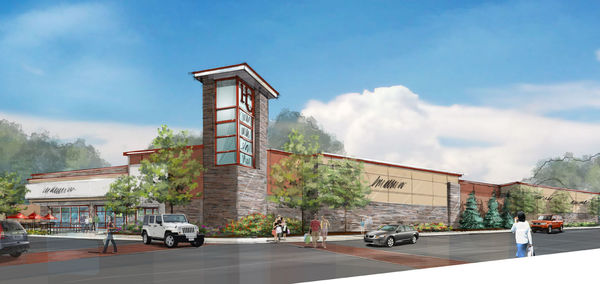
Work to be done…
The Hamilton Crossings Project is not perfect. But it does have promise. Right now the project is seeking funding. Some have issues with the public funding portion. Additionally the developer is seeking dozens of variance requests. Including one serious red flag regarding maximum impervious coverage. Residents will need to monitor this carefully.

